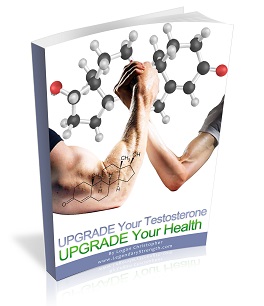On the topic of the recent testosterone articles, Ken asks:
“I had blood work done two months ago, and my free testosterone wasn’t bad: 794 ng/dl. But my free testosterone, which I understand is what really counts, was quite low – 9.5 pg/ml. They suggested that might be because of high sex-hormone binding globulin. In fact the SHBG was 96.6 nmol/l, which was quite a bit above the high end of the reference range. (Also total estrogens were high at 133 pg/ml). Is the high SHBG likely to be the key, or maybe something else? And what would be my best way to proceed in ameliorating it?”
Great question. SHBG is one of the things that binds to testosterone. Formerly it was thought to render it inert, but more recent science is saying that it is not inert, just different.
As far as testing is concerned, yes, SHBG is one of the big things that determines the difference between Total T and Free T.
If you looked at the articles, you can see that I too have higher than reference range SHBG, though it’s about half of what Ken’s is. Some steps that should lower it include have good amounts of zinc, boron, omega 3’s, vit D, and magnesium.
As I write in my Upgrade Your Testosterone:
“I have a theory that aging people in Western societies are seeing such higher amounts of SHBG because of the excess of estrogenic chemicals. It’s possible that the human body is producing more SHBG to try to bind to these and transport them around. It’s just that this has a higher affinity for the androgens. Just a theory though, as I haven’t seen evidence to back this idea up specifically. If this is the case, then the previous steps all will help here too.”
Another theory, of which there is some evidence that hard workouts are going to raise SHBG too. Like the androgens need to be transported around the body more, specifically to muscles, based on those workouts.
There are some herbs that help with SHBG in some people.
All that being said, I’d say most important is focusing on the elevated estrogen.
Lower the amount of estrogenic activity brought on by our polluted environment. Limiting plastics, skin care products, pesticides, heavy metals, mycotoxins and much more. Lower the amount of estrogenic activity by lowering the conversion of your own testosterone into estrogen. Also related to micronutrients, and importantly not carrying around extra fat which produces the aromatase enzyme.
By doing those things, you’ll like see some normalization of your Free T.

